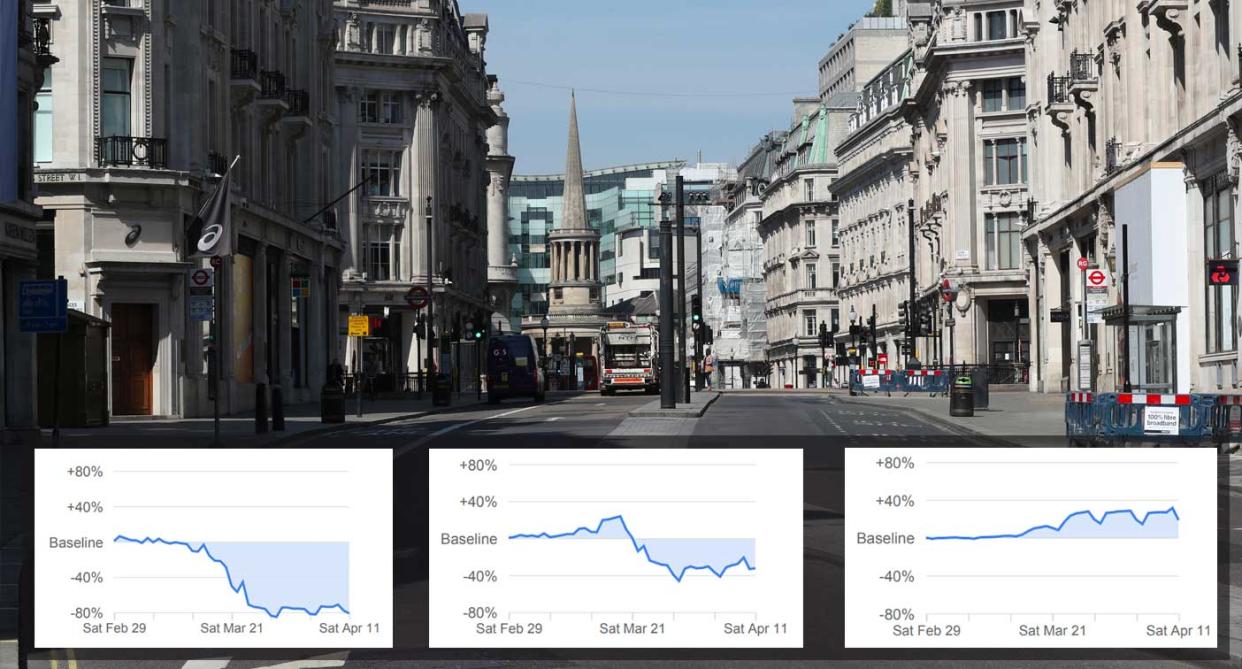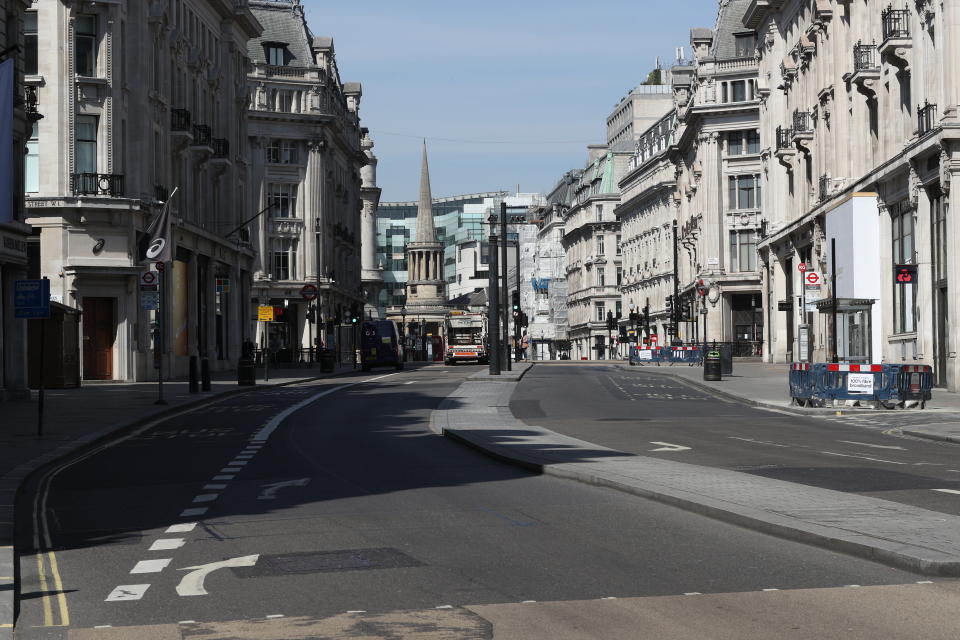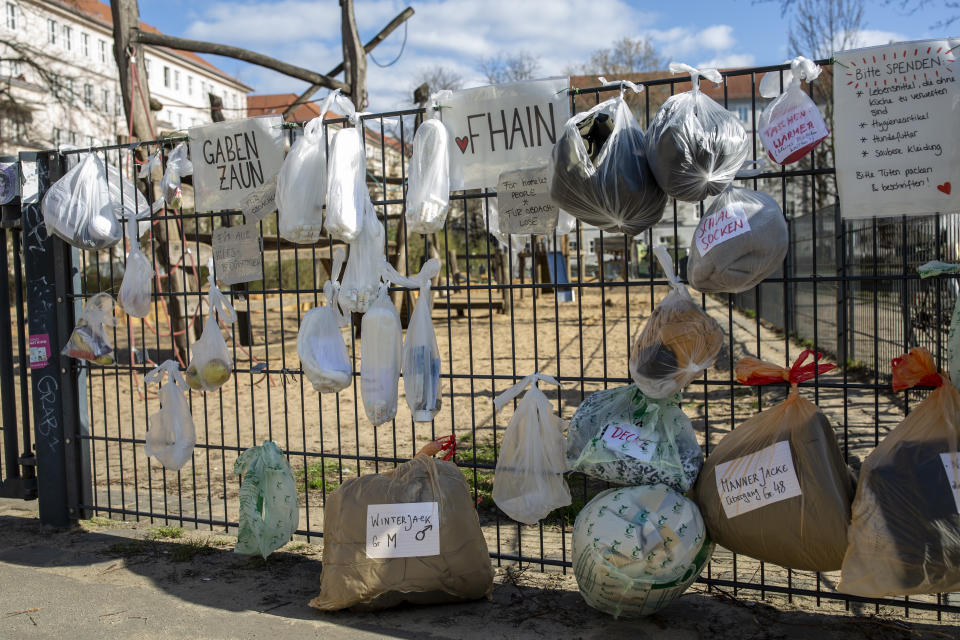Graphs show how well Brits are sticking to coronavirus lockdown measures

The UK’s coronavirus lockdown is to be extended for at least another three weeks.
The foreign secretary Dominic Raab warned lifting restrictions now would risk a dangerous second peak of COVID-19. He said the original three-month timeline set down by Boris Johnson to come through the peak of the virus was broadly “still the outline”.
He acknowledged the measures despite “all the economic and social impact the current measures are having”.
In recent days, the government has thanked the British public for largely staying at home.
NHS England chief Professor Stephen Powis has urged people to keep up social distancing, which was impacting on the infection rate. “This is evidence that is now accumulating that the benefit of that social distancing and reducing transmission is now beginning to be manifest in a stabilisation in hospital admissions,” he said. “We are beginning to see the benefits of the undoubted hardship that we have all been asked to go through in terms of social distancing, in terms of not meeting with friends and family.
Latest coronavirus news, updates and advice
Live: Follow all the latest updates from the UK and around the world
Fact-checker: The number of COVID-19 cases in your local area
6 charts and maps that explain how COVID-19 is spreading
However, the UK’s extension of lockdown measures is in contrast to other European countries - including other badly hit nations such as Germany, Italy and Spain - who have already begun to ease restriction.
So just how much has the British public responded to government requests to ‘Stay at home. Protect the NHS. Save lives’ - particularly in relation to others?
According to Google’s mobility report, which shows changes in movement in terms of transport, public spaces (such as parks and beaches) and retail stores, the UK is operating at a similar level to other major European countries in terms of mobility reduction.
The report shows that in terms of retail, transport and workplace mobility, the UK’s reduction has been at a similar level to that of Spain, Italy and France, but it’s reduction in mobility of public spaces has been significantly less – 37% compared to around 80%.
For the USA it’s 16%, and for New York, just a 12% drop. Over the same time period, Germany’s rate has increased by over a third, but with a significantly lower number of recorded deaths.
The UK

The UK was one of the last European countries to got into lockdown. It did so on Monday 23 March, with prime minister Boris Johnson announcing at the time that businesses were to close and members of the public were to stay in their homes. In both instances, essential use would be allowed to continue, including one form of exercise per person, per day.
On the day the lockdown was enforced there were 6,650 confirmed cases in the UK, with 335 deaths. The rate in both has continued to rise until April 10th, 18 days after the lockdown begun, when the country experienced its highest daily cases and deaths; 8,681 cases and 910 deaths.
According to Google, the UK’s restrictions on retail and transport have been far more successful than parks and grocery/food shops, expected given the government’s instructions.



Rest of Europe
What do the decisions of other countries in regards to lockdown rulings, and their relationship with rise and fall in cases show us?
Italy was the first European country to impose a lockdown. Since then, the UK, Spain, France, Germany, Switzerland and the United States have all followed suit.
Italy, Spain, France and Germany have all experienced over 100,000 cases, with Spain set to top 200,000 within the next few days. It was approximately a month after imposing restrictions that some of the worst-affected areas in Spain and Italy began to reduce the number of new cases and deaths.
Italy

Italy went into lockdown on March 9, when their total cases had exceed 9,000 and deaths had reached 463 – both higher than when the UK did the same.
Stricter procedures meant that the fall in mobility within the parks has been at a similar level to that of retail, transport and work.
The country experienced its higher daily rate of cases 11 days after lockdown, with the average daily number falling steadily since.



Spain

Spanish prime minister Pedro Sánchez placed the country under lockdown five days after Italy, on March 14. In the last couple of days, some non-essential workers have been allowed to return to work.
It experienced its peak 12 days later, but the initial drop-off took longer than Italy to take effect. The country has also recorded more confirmed cases than any other in the world, with the exception of the United States.



France

France will remain in lockdown until at least May 11, says president Emmanuel Macron.
It began its period of restriction on March 17, with daily cases falling since on average since April 3. Police and the army have patrolled streets, with strict rules on food shopping instilled and even daily exercise eventually banned.
While daily cases has begun to drop, the number of recorded daily deaths has yet to properly do so, despite the regulations imposed.



Germany

Like it’s major European counterparts, Germany has over 100,000 confirmed cases, but its number of total deaths is significantly lower – less than 5,000.
The decrease in retail mobility or workplace mobility hasn’t been as sharp as its neighbours, while its mobility trends for parks and public spaces has actually increased since Bavaria became the first German state to go into lockdown, doing so on March 20.
The number of daily cases began to fall within eight days of that. As of next week, rules will be relaxed and small shops will be allowed to open once again.



New York

With different US states adopting different strategies, New York governor Andrew Cuomo told all non-essential workers to stay home on March 20.
Despite that, the mobility rates, particularly for public parks and grocery stores, hasn’t dropped nearly as much as European countries (Germany aside), and the same time period has seen the city become the new epicentre of the outbreak.




New York has over 200,000 confirmed cases and 16,000 deaths (nearly half the cases for the entire country).
The first set of charts shows the US as a whole, while below are the mobility rates for New York.
USA:

NEW YORK:

Watch the latest videos from Yahoo UK

 Yahoo News
Yahoo News 
